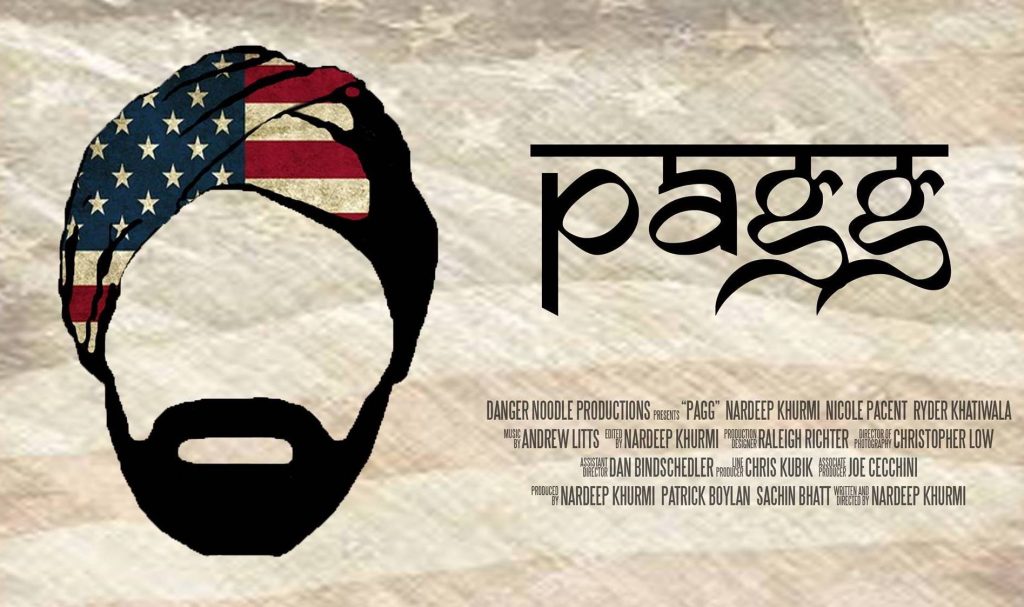
Look, I am a diaspora kid just like many of us, I was born in New York and lived between NYC and Arizona during a post 9-11 America that made turbans synonymous with terrorism. Actor and filmmaker, Nardeep Khurmi has taken the hate-filled sentiments that perpetuate our countries and translated those emotions into a short film titled “Pagg.” It’s a film that despite its brevity, tugged at my heartstrings with its relatable and very real storyline.
It brings me insurmountable joy to say that in my experience, the general sentiment towards my Sikh community is changing in places like Arizona, where just nine years ago, the “towel head” mentality was very, very painfully real.
While there is an increase in hate crimes and religiously motivated violence in North America, I believe that education and information are part of the solution.
We should all know by now what is under a pagg (HAIR, GUYS, IT’S JUST HAIR!), but I wanted to find out from Nardeep the inspiration behind his “Pagg.”
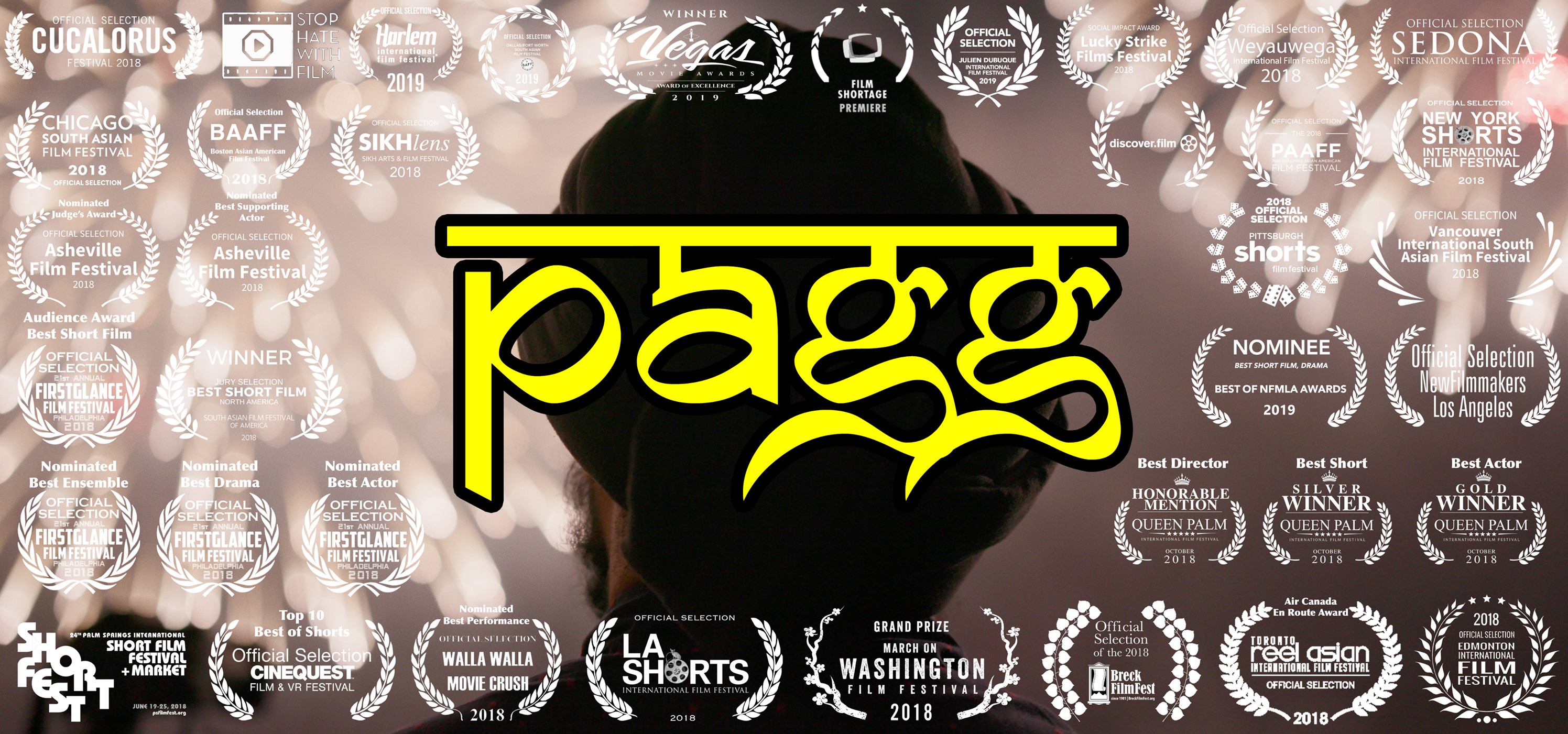
When did “Pagg” come into conception, and how?
‘Pagg’ came into conception as a result of the 2016 election cycle. There was so much anger, hatred, and fear bubbling up to the surface, and like many, I had hoped it was an anomaly. After the election, the frequency of hate crimes towards South Asians grew to a degree I hadn’t seen since 9/11. This was alarming, especially because the news would mention one event and then quickly move onto the next. Things changed when a shooting in Kansas City hit the cultural zeitgeist and was reported on for the better part of a week. I don’t want to go into the details, but the gist was that the assailant was bold enough to scream ‘get out of my country’ while opening fire on an Indian man in a bar. It was hard for me to shake the growing dread that all this was becoming the norm.
This type of rhetoric had even crawled back into my own life. I’ve dealt with my own racially charged encounters, but I was taken aback when, as I was walking down the street in liberal Los Angeles, the day after the election, a couple of ‘good old boys’ yelled ‘time to go back to your own country, Osama!’ from their truck. That hadn’t happened to me in years.
Suffice it to say, after the election, with the increase and boldness in hate crimes, I felt like it was necessary to make something that explored the fear that was growing within the South Asian community, and that’s how ‘Pagg’ was born. I was dealing with my own insecurities, fears, and anger due to what was happening in America.
“Pagg” touches on fear, racism, and intersectional issues. What was the thought process behind depicting interracial marriage?
Ha! Yeah, the film touches upon a lot, but I feel that’s hard to avoid since these issues intersect in so many ways. It was important for me to depict an interracial marriage for a variety of reasons. I’ve never really been satisfied with depictions of these types of relationships. They’re complicated and beautiful, but also loving and supportive. That being said, both partners in interracial relationships have to deal with micro-aggressions, albeit in different ways. I thought it would be interesting to see how Rachel deals with those types of comments and situations and how she chooses to support Mandeep in that.
Having Rachel not be South Asian was important in many ways because of what it represents. Mandeep is a Sikh American who has kept his traditional uncut hair and beard and wears a turban. Rachel accepts him for who he is and has never asked him to change. His home is a safe haven, and his relationship is a constant he doesn’t have in his everyday life and something he can always come home to.
Lastly, I wanted to show the isolation that can still exist in these relationships. Though Rachel does have to face the daily bigotries alongside her husband, she doesn’t necessarily feel the same isolation as Mandeep, considering she’s not Sikh. So it was important for me to show that even though this relationship was incredibly loving and supportive, there’s still space for Mandeep to be isolated within that because his situation is inherently different than his partner’s. The ‘us against the world’ mentality gets complicated when each individual’s experience is inherently different. And all that compounds when you have a child.
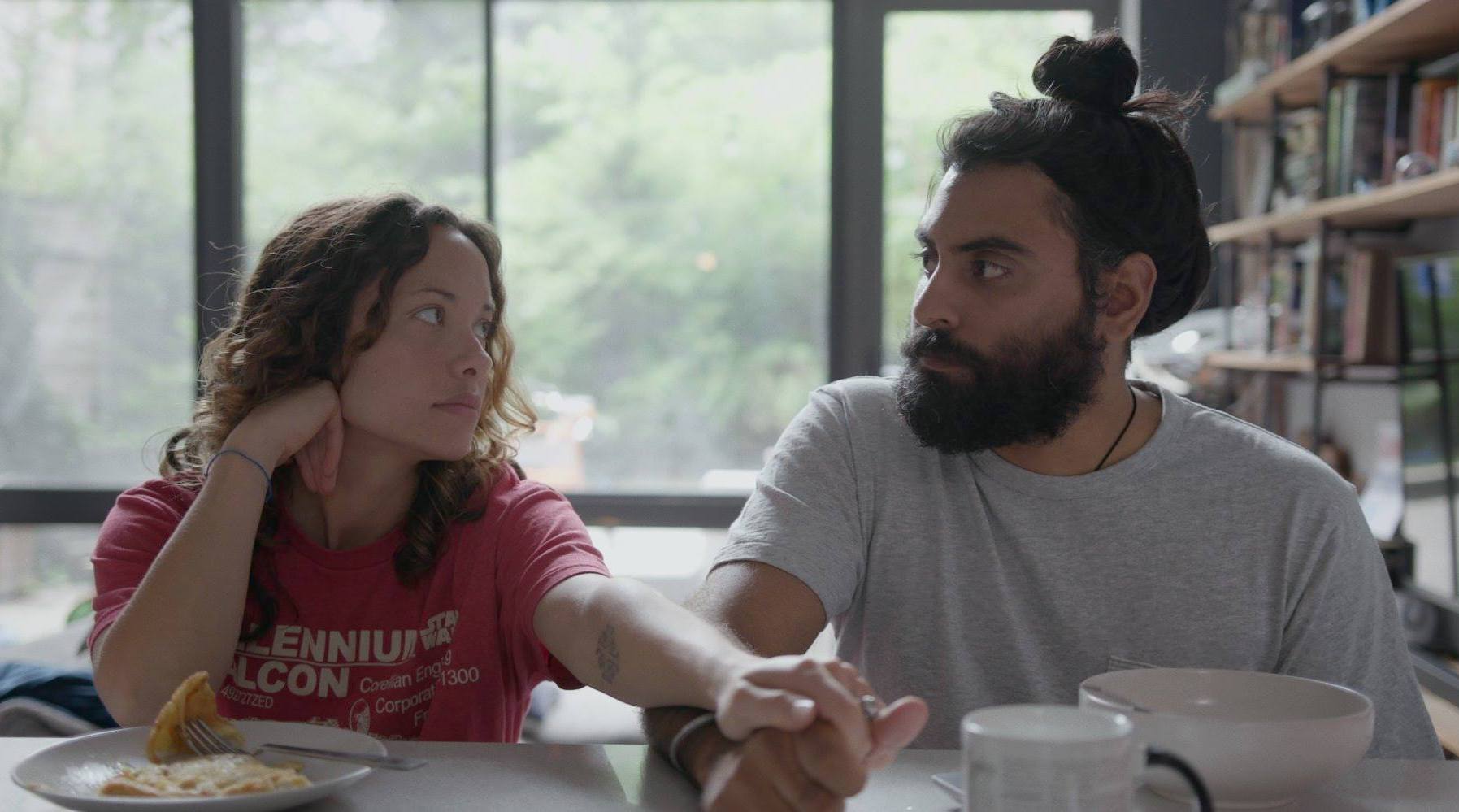
The death of Sikhs in the U.S. is often associated with being considered “terrorist” — do you feel that notion is changing?
I think that perception is slowly changing. The major problem we face in the US concerning Sikhs is a lack of knowledge. Most people don’t know who or what Sikhs are. They just draw the equivalence of the turban to some bad guy in a cave. But I think that idea is slowly eroding due to increased representation. As Sikhs are getting more face time both in the media and politically, I’m seeing the narrative changing for the positive.
Did you fear backlash from the Sikh community for including non-vegetarian and alcohol oriented components? Did you receive any?
I didn’t fear backlash from the Sikh community when I put those elements in. There are people who live their lives in a very strict manner, but there are also those who do not. I never intended on using the film as a way to proclaim ‘this is how everyone who looks like this acts.’ I did receive some backlash from certain people, but it allowed us to have a conversation about the realities of life and how not everyone lives the same way as someone else. They turned out to be very fruitful conversations!
As a woman raised around plenty of Sardars and Sardarnis (Sikh men and women) I have a love and admiration for a great mane and beard, it feels like a beautiful expression of something natural, this moment in the film stuck with me, because lord knows I WISH my hair grew!
An interesting conversation has sparked now that ‘Pagg’ is online. Some have taken issue with the choices of the lead character, feeling a true Sikh would never succumb to a hate crime the way Mandeep does in the film. They feel it misrepresents Sikhs. I think this is an interesting argument to have, particularly surrounding masculinity and the nature of storytelling and representation as a whole. The piece was never intended to represent all Sikhs or Sikhism, just this one particular person who happens to be of the faith.
I think this type of backlash is constructive in that it allows us to have a more complex dialogue about how these characters are presented. In my opinion, characters with three dimensions, with flaws, as opposed to perfect beings are always more interesting. It helps broaden our representation to show that these characters aren’t perfect, they make mistakes, and you don’t have to agree with their choices. (And allows us to have catharsis watching a journey we may not agree with) Certainly, there are people who would never succumb to hateful things, but this narrative was about someone who does, and it’s been really great to have those conversations with people who find it difficult to reconcile the complicated choices the main character makes.
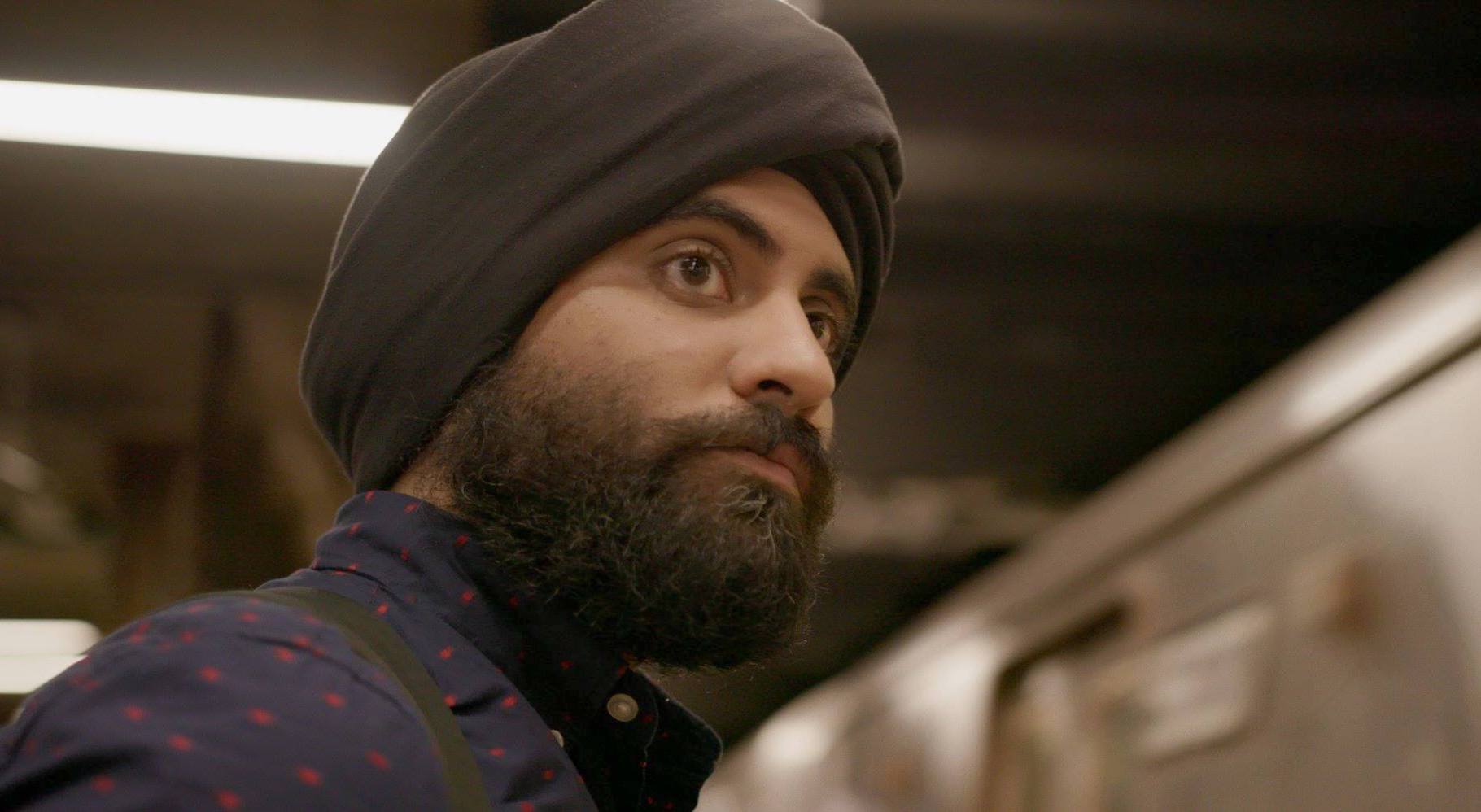
My favorite part of the film is when a woman remarks “it must be so beautiful” when referring to Manu’s hair. Was it important for you to show what’s truly “under the turban?”
I’m so glad you liked that moment! Yes, it was important for me to show what was ‘under the turban’ to normalize rather than exoticize. The first third of ‘Pagg’ depicts Mandeep with his family in his home without his turban. His hair is never treated as an ‘other’ or as something odd, just as a part of him. Since Rachel and Sunny never question it, the audience doesn’t question it. It’s just an extension of Mandeep. It’s only when he’s out in the world that it becomes a ‘thing,’ and by then I hope we have the audience in Mandeep’s corner so they can experience life from his perspective. Hair is an extremely important thing for a practicing Sikh, so it was important to layer in that idea so that the climax would hit in the right way. I also like this particular moment because it also shows that micro-aggressions aren’t always negative. They can come from very positive places even though the end result is awkward.
Where did you draw the experiences of hate crimes and racism from?
I drew from my own personal experiences, those of friends and family, and from the news. I grew up in the white suburbs of Philly, I have been stopped and frisked in NY, I have dealt with Neo-Nazis and KKK members. So there was plenty of experience there. It’s sad to say, but it’s not really hard to find inspiration for these types of things.
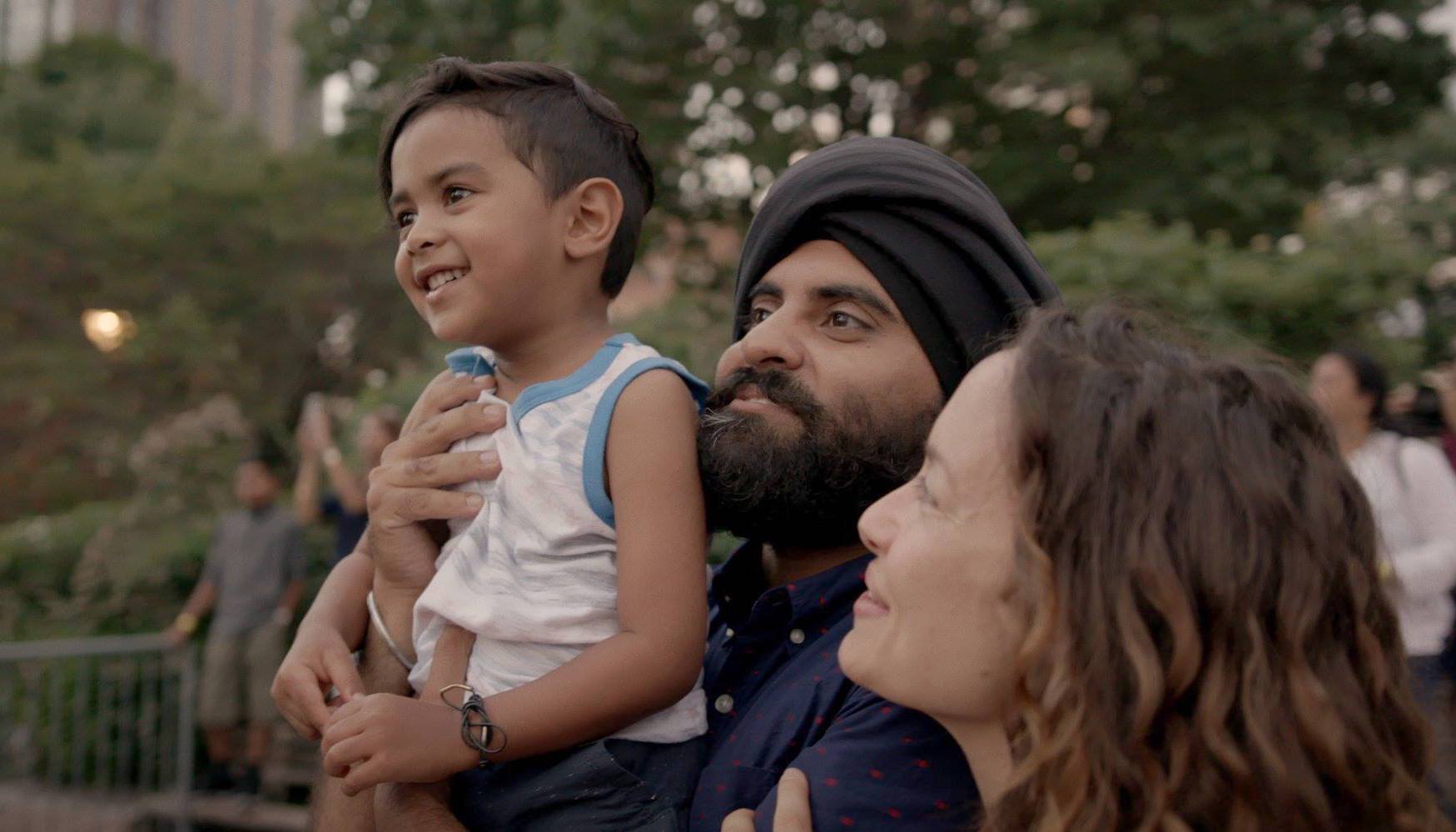
What was the fundraising process like?
I’ll be honest: The fundraising process was a bit hit and miss. We decided to crowdfund, which turned out to be great due to the generosity of friends and family, but ultimately the fundraising process disappointed me. We reached out to South Asian organizations across America, many of which have allocated funds for the arts. They are really lovely organizations that help our community, and everyone seemed excited to help the film in one way or the other, either monetarily or otherwise, but ultimately they all turned a cold shoulder to us.
I was disappointed by the larger South Asian community’s lack of support during the fundraising process, but this is a problem our community has been facing forever. When it comes to the arts, there’s still a big stigma to helping out. I’m seeing that change with the younger generation, but we need to get everyone on board, especially those organizations which have the ability to help young storytellers and artists.
What’s next for you as an actor and filmmaker?
Next up is a feature film. I’m keen on exploring the immigrant experience through the lens of the South Asian experience. I’m currently writing a feature film focusing on a road trip between a Punjabi truck driver and an undocumented immigrant. I’m hoping to get that off the ground in the next year. It’s been a great year as an actor. I just wrapped a feature film and television pilot, as well as a play, and I’m lucky enough to be a part of ‘Mira, Royal Detective’ on Disney, so I’m enjoying the grind and the hustle. You can probably see me on TV right now in a Choice Hotels commercial, as well as some episodic television in the fall.
[Read Related: Changing the Perspective of the Hijab: in Conversation With ‘Spiderman’ Star Zoha Rahman]
Part of representing our communities in entertainment and media is representing the spectrum of us that exist in the same manner as our counterparts. “Pagg” is a film I relate to closely, as I imagine many of my fellow Sikhs or South Asians do. Like Nardeep says, we have to work together and continue supporting one another more. If we do that, we just might be getting somewhere.




